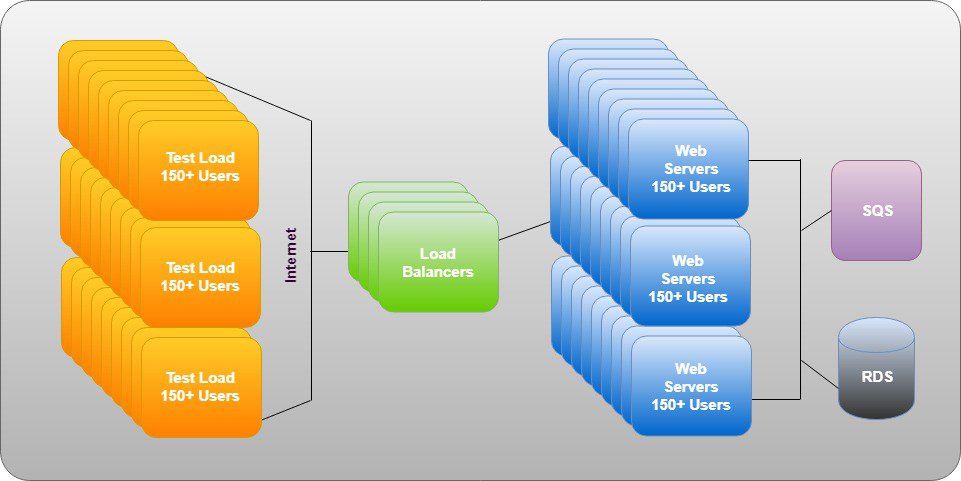
Before the innovation of cloud growing demand meant, adding extra space to install the hardware and then the addition of extra IT staff for the maintenance. This meant more investment for the organization. This wasn’t an issue for business with little growth but was a major problem for the business that was growing quickly.
We know cloud offers many benefits to the organization, but the most important feature is its ability to scale your IT environment on-demand. Scalability means the ability to handle growing or diminishing resources to meet business demands. Using scalability feature in AWS cloud the resources can grow or shrink and still meet business needs.
So using the cloud meant no more worrying about the physical environment and allowing you to start small and support the growth of the organization. Unlike traditional on-premises data center, one can scale the resources in the cloud as on-demand.
Scalability in Cloud Computing
Let’s look at the three types of scaling in the cloud: Vertical Scaling, Horizontal Scaling, and Diagonal Scaling.

Vertical Scaling
Vertical scaling is known as scaling up. Which means you maintain the capacity of your existing infrastructure by adding or removing additional resources. In vertical scaling, the infrastructure remains the same and only the number of resources in adjusted. During resizing of your infrastructure, you may need to take the application down, so one should plan for maintenance.
Horizontal Scaling
Horizontal scaling is known as scaling out. Which means you are provisioning supplementary infrastructure and connecting them to work as a single system. In horizontal scaling, the resources are meant to work independently of each other so that each service can scale out whenever required. This offers endless growth, and many cloud providers offer tools to help you scale out. This makes horizontal scaling to be more labor-intensive and longer duration to configure the resources to work together. Both vertical and horizontal solves different scalable issues, so one should consider according to the business demands.
Diagonal Scaling
The combination of both vertical and horizontal scaling is known as diagonal scaling. Diagonal scaling helps to combine the scaling up and scaling down. It offers flexibility for the workload that requires additional resources for a specific time. This type of scaling provides enhanced budgeting and cost-effective for business with variable workload.
Best Scalable Practices
We’ve seen the different types of scaling, now let’s look at the best practices that you can implement for scalability:
- Auto Scaling
Many cloud providers offer auto-scaling, which helps you further to manage the resources. Auto Scaling means automatically scaling capacity up or down based on the user-defined conditions. This makes sure that you always have the right amount of resources to handle your application’s load. Auto-scaling eliminates the constant monitoring of the traffic that your serves are handling as it will automatically add or remove the additional servers based on the user’s condition. You can employ multiple policies for the same application for scaling up or down based on the events. Also, you can create auto-scaling policies for the events you don’t anticipate. - Load Balancing
Load balancers are used to distribute workloads across various nodes to maximize resources. All the traffic comes through the load balancer and then it steers the traffic to the instance that can best utilize the resource. Load Balancer attempts to balance the workload among all the available instances to utilize the unused resources. They also monitor the health of each instance to ensure it sends traffic to only healthy instances. - Container Orchestration
Container orchestration systems have become widely popular for creating a portable and scalable infrastructure. Containers require only a few resources, and they offer more flexibility than virtual machines. Containers are isolated from their surrounding, in turn, limiting uses to the single container, as opposed to an entire machine.The containers can deploy a large number of application instances, which combined with the low use of resources makes them an excellent choice to scale up microservices. Automatic services like auto placement and auto replication are done using Docker Swarm, Amazon ECS, and Kubernetes to allow container stack to scale easily. - Run More Test
Test the scalability of your cloud environment to avoid bottlenecks later on. Invest an additional time at the end of your application development to run tests if the scalability is happening automatically and make sure you don’t stumble across issues before making the application live.
Conclusion
Cutting loose ties that bind your physical infrastructure and deploying in the cloud has many advantages. You can either have a partial cloud environment (Hybrid Cloud) or deploy fully into the cloud, but the benefits weigh on the cloud. By utilizing the cloud, one can scale easily and quickly to stay agile.
About InterPole
InterPole was established in 1996 and has been engaged in web hosting, email, and management of IT infrastructure. InterPole pioneered with Virtual Private Servers in 2004 and Cloud Hosting in 2008. Over the years, InterPole has worked with over 6200 mid-sized businesses and startups, and have assisted them in their journey towards the adoption of modern technologies through the Internet. InterPole is a Standard Consulting Partner of Amazon AWS and Microsoft Azure. With this partnership, provides Managed AWS service and maintains a team of engineers who are trained and certified for the specific cloud platforms. These benefits companies in defining their cloud strategy and making a well-planned journey, reliably and cost-effectively.

